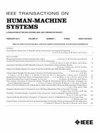利用共振稀疏频谱分解估算人体生命体征
IF 3.5
3区 计算机科学
Q2 COMPUTER SCIENCE, ARTIFICIAL INTELLIGENCE
引用次数: 0
摘要
对人体生命体征的非接触式测量和监测已发展成为高效健康管理的重要工具。毫米波雷达具有更强的穿透材料和衣服的能力,受光照、温度和湿度等环境条件的影响较小,因此在过去几年中,人们对毫米波雷达用于人体生命体征测量进行了广泛研究。然而,由于杂波、随机身体运动和呼吸谐波的干扰,很难准确获取心率(HR)。本文提出了一种共振稀疏频谱分解(RSSD)算法和谐波使用算法(HUA),用于精确提取心率。RSSD 解决了相位信号中的杂波和随机身体运动效应,而 HUA 则利用谐波来精确提取 HR。我们在不同场景下进行了一系列对照实验,并根据智能背心收集的地面真实心率/脉搏率数据对所提出的方法进行了验证。结果表明,在距离不超过 2 米的情况下,该方法的准确率高达 98%-100%。该方法通过有效降低相位信号中噪声的影响,大幅提高了心率估计的准确性,即使在杂波严重和身体适度运动的情况下也是如此。我们的结果表明,所提出的方法可以有效地抵消谐波干扰,从而准确地估算出心率,其精度可与距离雷达传感器 4 米以内的心率估算相媲美。本文章由计算机程序翻译,如有差异,请以英文原文为准。
Human Vital Signs Estimation Using Resonance Sparse Spectrum Decomposition
The noncontact measurement and monitoring of human vital signs has evolved into a valuable tool for efficient health management. Because of the greater penetration capability through material and clothes, which is less affected by environmental conditions such as illumination, temperature, and humidity, mmWave radar has been extensively researched for human vital sign measurement in the past years. However, interference due to unwanted clutter, random body movement, and respiration harmonics make accurate retrieval of the heart rate (HR) difficult. This article proposes a resonance sparse spectrum decomposition (RSSD) algorithm and harmonics used algorithm (HUA) for accurate HR extraction. RSSD addresses the clutter and random body movement effects from phase signals, while HUA uses harmonics to extract HR accurately. A set of controlled experiments was conducted under different scenarios, and the proposed method is validated against ground truth HR/RR data collected by a smart vest. Our results show an accuracy of up to 98%–100% for distances up to 2 m. The method substantially improves HR estimation accuracy by effectively mitigating the effects of noise in the phase signal, even under heavy clutter and moderate body movement. Our results demonstrate that the proposed method effectively counters harmonic interference for accurate estimation of HR comparable to RR estimation up to a distance of 4 m from the radar sensor.
求助全文
通过发布文献求助,成功后即可免费获取论文全文。
去求助
来源期刊

IEEE Transactions on Human-Machine Systems
COMPUTER SCIENCE, ARTIFICIAL INTELLIGENCE-COMPUTER SCIENCE, CYBERNETICS
CiteScore
7.10
自引率
11.10%
发文量
136
期刊介绍:
The scope of the IEEE Transactions on Human-Machine Systems includes the fields of human machine systems. It covers human systems and human organizational interactions including cognitive ergonomics, system test and evaluation, and human information processing concerns in systems and organizations.
 求助内容:
求助内容: 应助结果提醒方式:
应助结果提醒方式:


